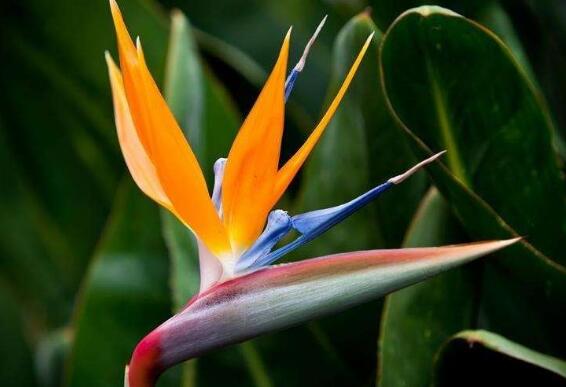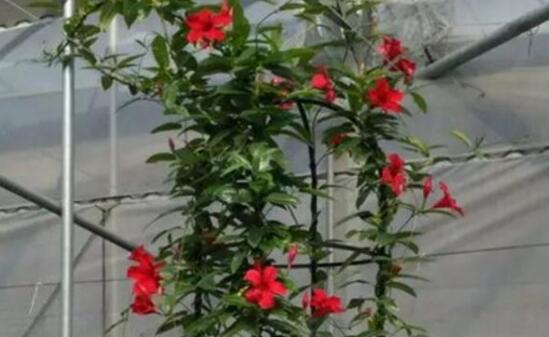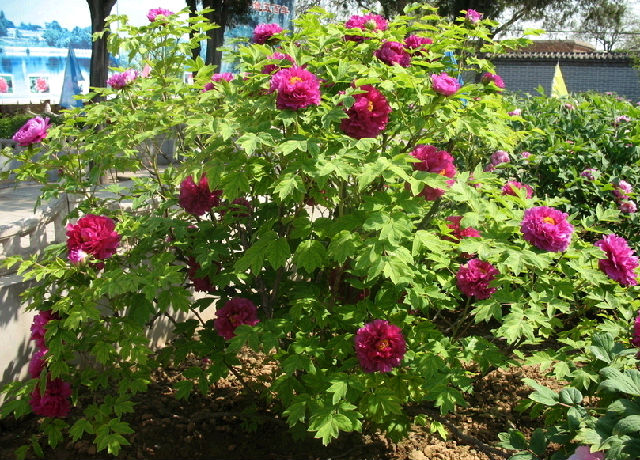The orchid doesn't blossom when raised indoors, why doesn't it blossom / lack of light?
As people pay more and more attention to their health, raising plants indoors has become a choice for many people, and the beauty of orchids is fascinating, so many people plant them indoors. Then, many flower friends will encounter a problem, that is, the orchid does not bloom indoors, so why does the orchid not blossom? In this regard, the editor summed up five reasons, let's go and have a look.
First, the orchid will not blossom when raised indoors.

A pot of crane orchid, from sowing to flowering, usually takes 4-5 years, so when it does not look good, or even does not bloom, it is really a pity. In life, there are often flower friends who encounter the orchid not blossom indoors, so why does the orchid not blossom? Next, the editor will analyze it from the aspects of light, water and fertilizer, etc.
Why don't the orchids blossom?
According to the editor, the reason why the orchid does not bloom is mainly because during the flower bud differentiation period, people do not operate properly in water, fertilizer and light management, which leads to the failure of the physiological process of flower bud differentiation, and the result will certainly not blossom. Therefore, during the period of flower bud differentiation, we must control water, fertilizer and light properly. The specific measures are as follows:
1. Lighting
According to the growth habits of Clematis paniculata, we should enhance the light during its flower bud differentiation period. At this time, it is spring, and the ultraviolet light in the sun is not too strong, which can inhibit overgrowth and is beneficial to flower bud differentiation. In summer, the light is too strong, we also need proper shading to prevent burning leaves.
2. Watering
The flower bud differentiation period of Clematis paniculata is usually from April to July. At this time, for flower bud differentiation, we should strictly control moisture and reduce watering times. Because the orchid is more drought-resistant, when the leaves of the orchid are curled, everyone will water them. In addition, when the wet soil can only be seen by 2-3cm under the surface of the basin soil, it can also be watered.
3. Fertilization
In order to avoid the phenomenon that the orchid does not blossom, in the flower bud flowering period, we must control fertilization, do not apply nitrogen fertilizer, but can apply phosphorus and potassium fertilizer, can also be irrigated and fertilized according to 20% aqueous solution, which can not only increase fertility, but also improve the soil.
4. Indoor maintenance
In whether the orchid is poisonous, we have said that the orchid can be raised indoors. So when the weather is getting cooler, we should move the orchid indoors and keep it at room temperature as far as possible, so as not to affect its normal growth. In order to prolong the florescence, we can also adjust the indoor temperature to 15-18C, so that the orchid can bloom until the Spring Festival, which can increase the festive atmosphere.
5. Points for attention
Why does the orchid not blossom? in addition to light and water and fertilizer, there is one thing we must pay attention to, that is, do not give hormone flower fertilizer. Some flower fertilizers containing hormones are often sold on the market, which can easily disrupt the law of physiological growth of flowers, seriously affect flower bud differentiation, and cause plants to grow excessively without flowering.
Summary: generally speaking, the orchid has a long flowering period and excellent viewing, so in order to better enjoy the beautiful scenery, we must not be afraid of trouble. Only after careful care will your orchid blossom beautifully. As for the reason why the orchid does not blossom, the editor has introduced it here, hoping to give you some help.
When does the orchid bloom and how to prolong the flowering period / barefoot flowering for 100 days?
Crane orchid, a very strange flower-shaped plant, seen from afar, looks like a crane that wants to spread its wings. The picture is really beautiful. Nowadays, the orchid has become a noble flower and enjoys a good reputation in the world. When will the orchid blossom? The length of flowering time will directly affect the ornamental. How long is the flowering period of the orchid? In this regard, it is up to the editor to solve everyone's doubts.
When will the orchid blossom, June-July
As a beautiful plant, the orchid is potted at home by many flower friends, and its beauty is mainly reflected in the flowers, so everyone wants to know when the orchid will bloom. In this regard, according to the editor's inquiry, the orchid blossoms in June or July every year, that is, at present, so the florists who raise the orchid should pay attention.
2. How long is the flowering period of Cymbidium, more than 100 days
If it is a seedling cultivation, it usually takes 4-5 years for the orchid to blossom, so friends who want to raise it should think carefully in advance. However, the flowering period of the orchid is long, up to more than 100 days, so it is worth the long wait. Looking at the flowers like the crane, the home was suddenly full of life.
In addition to blooming in spring, the orchid also blossoms in winter, which is rare. Not only that, if we follow the breeding method of the orchid and cultivate it carefully, the orchid can blossom continuously all the year round. It takes about 3 days for each floret to bloom, which can last for 10-15 days, and the total viewing time for each flower is about 30-40 days.
Third, how to prolong the flowering period of Cymbidium
Although the flowering period of the orchid is long, it takes 4 or 5 years to wait for 100 days of beauty, which is not satisfied for most flower friends. Therefore, how to prolong the flowering period of Cymbidium has become an issue of great concern. In this regard, the editor summed up several skills, which can prolong the flowering period once done.
1. Plenty of sunshine
The orchid likes the light, at the same time, it is also afraid of bright light; once the light is too strong or insufficient, the plant will have a variety of problems, such as yellow leaves, curly leaves and other symptoms. Therefore, how to prolong the flowering period of the orchid, first of all to ensure adequate light, this is a very difficult thing, we can not be careless.
2. Suitable temperature
In indoor culture, we must pay attention to the temperature, the plants are very sensitive to this. We should keep the temperature between 23-25 ℃ during the day and 10-18 ℃ at night. Too high temperature will speed up the metabolism of flowers, if the ambient temperature changes too much, it will shorten the florescence. If we can ensure the right temperature for a long time, the flowering period of the orchid will naturally be prolonged.
3. Pay attention to moisture
If you want to prolong the flowering period of the orchid, you should not be careless in terms of water and fertilizer. First of all, the flower can not remove the water, the water on it will make the flower perishable, and people should not often touch the Corolla with their hands. Second, after the emergence of buds, should not continue to fertilize, otherwise it will accelerate the aging of flowers. Do a good job in the above points, your crane orchid blooming time is definitely longer than others!
Generally speaking, it is not difficult to raise the orchid, but it takes us some effort to produce beautiful flowers and a long time to bloom, but it is all worth thinking about the beauty of the orchid. With regard to the flowering period and flowering time of the orchid, this is the editor's introduction. Finally, I hope that all the orchids can produce beautiful flowers.
The reason why the orchid does not blossom 1. The imbalance of light intensity.
Magnolia likes light, but if the strong light in summer will make the plant lose water and delay flowering; if the light is too weak, it will affect photosynthesis and delay flowering.
2. Cultivate fertilizer imbalance.
The orchid has a high demand on the medium soil, if the nutrition is not enough, it will carry on the self-protection mode and delay the flowering. During the growth period, it is necessary to apply fertilizer every half a month, but if the plant growth is too exuberant, you can consider reducing fertilization, which can be applied with 0.2% potassium dihydrogen phosphate solution.
3. The pot is too big.
If the basin is too big to make the fleshy root of Magnolia expand and grow, it will certainly affect flowering if it absorbs too much nutrition.
4. The plant is too deep.
When the orchid is used as a potted plant, if it is planted too deep, it will not pass through the neck, the flower bud will be affected when the pot is changed, and the medium soil will not pass the fleshy root.
From the above, we know that it usually takes 4-5 years for the orchid to blossom, so the editor suggests that when you buy or choose, it is best to choose plants with more than 3 years, 3 or 4 buds, buds and total leaves of not less than 16. In this way, the flowering of the old plant will not be affected, and the new plant will be able to blossom the following year.
In the process of planting the orchid, we should also pay attention to the reason why the orchid does not bloom for a long time. If you want to know more, please pay attention to the four Seasons Plant Network!
- Prev

Does the fragrant vine need to hit the top and pick the heart? Why does the fragrant vine only climb the vine but not blossom and grow brown spots? why are the leaves yellowing?
It is well known that the flowering period of fragrant vines is relatively long among plants, but some people find that they do not see fragrant vines blossom even in summer, but climbing vines has no effect, so why do they only climb vines without blooming? What is the reason why the fragrant vine does not blossom? The editor is here to answer one by one.
- Next

How to control the white silk disease of peony flower
The white silk disease of peony mainly occurs at the base of the stem near the ground. Years of studies have shown that planting soil and fertilizer are the main sources of infection of the disease. Peony is more susceptible to disease before and after flowering and in hot and rainy seasons. At the time of the disease, the aboveground part had no obvious symptoms, and then the hyphae spread from the rhizome to the soil surface with the increase of temperature and humidity.
Related
- Fuxing push coffee new agricultural production and marketing class: lack of small-scale processing plants
- Jujube rice field leisure farm deep ploughing Yilan for five years to create a space for organic food and play
- Nongyu Farm-A trial of organic papaya for brave women with advanced technology
- Four points for attention in the prevention and control of diseases and insect pests of edible fungi
- How to add nutrient solution to Edible Fungi
- Is there any good way to control edible fungus mites?
- Open Inoculation Technology of Edible Fungi
- Is there any clever way to use fertilizer for edible fungus in winter?
- What agents are used to kill the pathogens of edible fungi in the mushroom shed?
- Rapid drying of Edible Fungi

